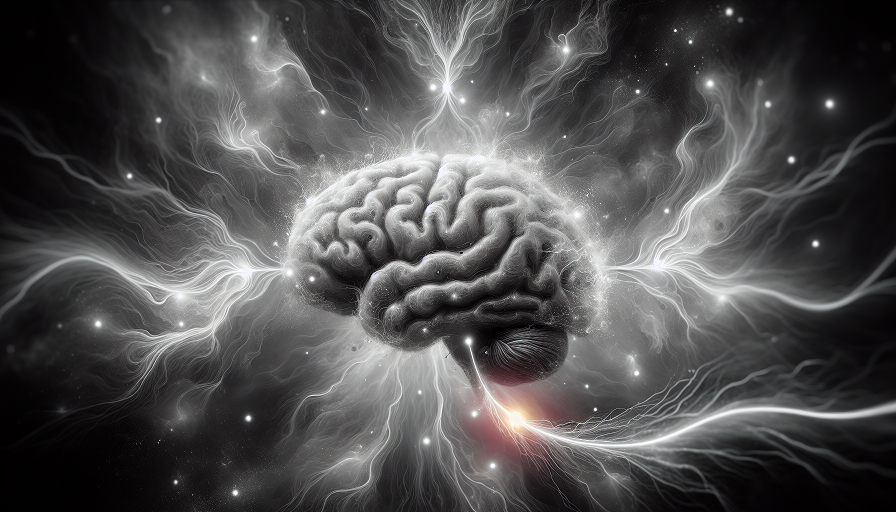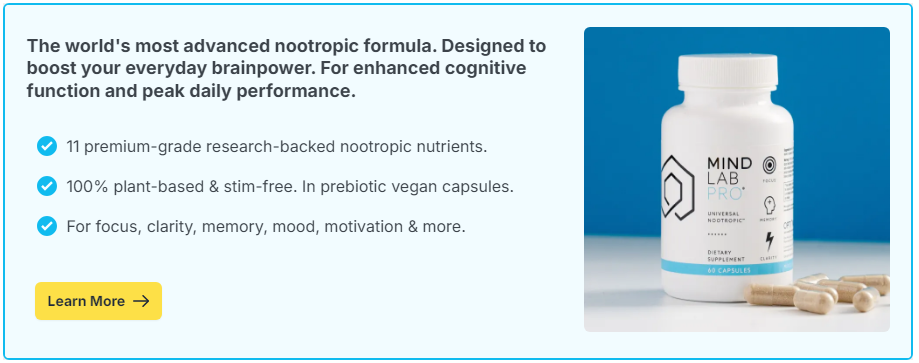
You’re in a meeting, class, or on the phone. Your pen starts drifting. Maybe it forms a spiral. Maybe it becomes a spaceship, a flower, or a geometric mess. You’re doodling—and if someone peeks over your shoulder, they might assume you’re zoning out. But are you?
Surprisingly, the answer might be no. In fact, doodling while listening can enhance memory, boost focus, and support creative thought. Far from being a mindless habit, doodling may be your brain’s way of staying tuned in—especially during passive or repetitive information intake.
Contents
- The Neuroscience of Doodling
- Doodling and Memory Retention
- Doodling and the Fight Against Boredom
- Creative Boost or Just a Habit?
- When Doodling Can Become a Distraction
- Why Some Brains Doodle More Than Others
- Should We Encourage Doodling in Schools and Workplaces?
- Can Nootropics Enhance Doodling’s Cognitive Effects?
- About the Author
The Neuroscience of Doodling
Doodling engages multiple areas of the brain simultaneously, including:
- Motor cortex – controls fine hand movements
- Visual cortex – processes spatial and shape-based information
- Default mode network (DMN) – activates during low-focus mental states like daydreaming
- Prefrontal cortex – involved in attention regulation and working memory
This means doodling is both an act of expression and a subtle form of cognitive multitasking—if done under the right conditions.
Doodling and Memory Retention
One of the most surprising findings in cognitive research is that doodling can actually improve recall. In a landmark 2009 study published in Applied Cognitive Psychology, participants who doodled while listening to a monotonous voicemail recalled 29% more information than those who didn’t.
Why This Works
The theory? Doodling helps prevent the mind from drifting too far. It acts as a “cognitive anchor,” keeping your brain just engaged enough to stay on track without becoming overwhelmed or distracted by intrusive thoughts.
This is particularly effective during:
- Lectures or meetings with long stretches of information
- Phone calls where you’re listening more than speaking
- Podcasts, webinars, or passive listening environments
Doodling and the Fight Against Boredom
Boredom is a well-documented attention killer. It leads to mind-wandering, fatigue, and disconnection. Doodling appears to offer a non-disruptive outlet for mental energy, keeping your focus light but engaged.
Active vs. Passive Attention
Passive attention (just listening) can be harder to sustain than active attention (doing something while listening). Doodling gives your body something to do without hijacking your brain’s core processing systems.
It’s like tapping your foot to a beat—only your hand is making shapes instead of rhythms.
Creative Boost or Just a Habit?
Some people doodle out of habit. Others do it to process emotions or explore ideas. Research has found that doodling can increase creative fluency—the ability to generate novel ideas.
Unlocking Visual Thinking
Doodling taps into non-verbal reasoning and symbolic processing. You may draw something that seems random, only to realize later it reflects a theme or insight connected to what you were hearing.
This is why brainstorming sessions often benefit from sketching—not just verbal ideation. Visual language can bypass logical constraints and open new connections.
When Doodling Can Become a Distraction
Not all doodling is beneficial. If your drawing becomes elaborate or attention-consuming, it can pull cognitive resources away from listening or comprehension. The key lies in intent and complexity.
Helpful Doodling Looks Like:
- Simple shapes or repetitive patterns
- Light shading or abstract designs
- Quick, subconscious sketches
Potentially Distracting Doodling Looks Like:
- Detailed scenes or characters
- Writing elaborate words, poetry, or full sentences
- Intentional artmaking instead of background sketching
The difference lies in whether the doodling enhances or competes with your working memory.
Why Some Brains Doodle More Than Others
People with strong visual-spatial intelligence or kinesthetic learning preferences may naturally turn to doodling as a tool for engagement. It can also be helpful for people with ADHD or anxiety, offering a subtle outlet for restlessness and overactive thought patterns.
Doodling and Emotional Regulation
Doodling can help regulate mood by offering a calming, repetitive motion. It’s often compared to fidgeting or using a stress ball—only with the bonus of being creative and expressive.
Should We Encourage Doodling in Schools and Workplaces?
In many environments, doodling is discouraged as rude or inattentive. But research suggests this is an outdated view. As long as the doodling doesn’t disrupt the task or others, it may actually enhance performance.
Encouraging note-taking formats that include space for sketching—or allowing whiteboards, scratchpads, or digital drawing tools—can help support neurodiverse thinkers and unlock better engagement.
Can Nootropics Enhance Doodling’s Cognitive Effects?
While doodling is largely a natural behavior, some nootropics may support the brain systems that make it more effective—namely attention regulation, working memory, and creative insight.
Nootropics That May Help
- Citicoline: Enhances focus and clarity, helping doodling support rather than distract from listening
- L-Theanine: Promotes a calm, alert state—ideal for engaging light-focus activities like doodling
- Lion’s Mane Mushroom: Supports neuroplasticity and creative thought formation
- Rhodiola Rosea: May reduce cognitive fatigue during long periods of passive attention
These supplements can help fine-tune your mental environment so that your natural cognitive habits—like doodling—become tools for performance, not escape.
Doodling isn’t zoning out—it’s zoning in differently. When used with intention, it becomes a bridge between attention and imagination, memory and emotion. Your pen’s meanderings may look like nonsense—but beneath the scribbles, your brain is staying focused, absorbing, and maybe even creating.
So next time your hand starts to wander while you’re listening, don’t fight it. Let it flow. Your brain might just be telling you it’s ready to engage in its own quiet, brilliant way.

